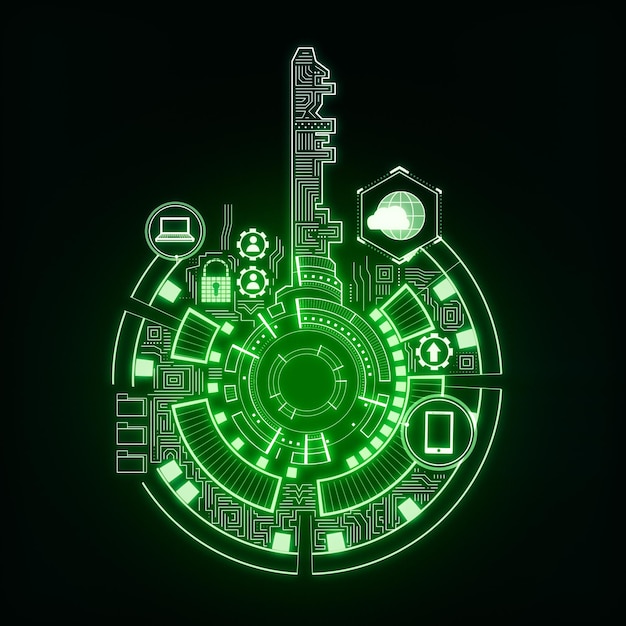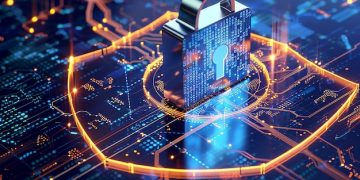Tech Impact on US Energy: Innovations & Challenges

The Impact of Tech on the US Energy Sector: Innovations and Challenges is transforming energy production, distribution, and consumption through smart grids, renewable energy integration, and enhanced efficiency, but also presents cybersecurity and infrastructure adaptation challenges.
The impact of tech on the US energy sector: innovations and challenges is undeniable, as technological advancements are reshaping how energy is produced, distributed, and consumed, offering a path toward a more sustainable and efficient future.
The Rise of Smart Grids
Smart grids are revolutionizing the US energy sector by providing real-time monitoring and control capabilities. These advanced systems improve grid reliability, reduce transmission losses, and enable better integration of renewable energy sources.
By leveraging data analytics and automation, smart grids optimize energy distribution and respond dynamically to changing demand, enhancing overall grid efficiency.
Real-time Monitoring and Control
Smart grids use sensors and advanced metering infrastructure (AMI) to gather real-time data on energy flow and grid conditions. This data is analyzed to identify and address potential issues proactively.
Improved Grid Reliability
The ability to monitor and control the grid in real-time allows for quick responses to outages and disruptions, minimizing downtime and improving overall grid reliability. Smart grids can also reroute power flow to bypass damaged sections, ensuring continuous service.
- Enhanced Fault Detection: Quickly identify and isolate faults to minimize outages.
- Dynamic Load Balancing: Optimize energy distribution based on real-time demand.
- Predictive Maintenance: Use data analytics to predict and prevent equipment failures.
Smart grids are not just about technology; they represent a fundamental shift in how we manage and distribute energy, paving the way for a more resilient and sustainable energy future.

Renewable Energy Integration
Integrating renewable energy sources like solar and wind into the grid presents both opportunities and challenges. Tech innovations are crucial for overcoming the intermittency and variability associated with these sources.
Advanced forecasting models, energy storage solutions, and smart grid technologies enable a more seamless integration of renewables, making them a reliable part of the energy mix.
Advanced Forecasting Models
Accurate forecasting of renewable energy generation is essential for balancing supply and demand. Advanced weather models and machine learning algorithms are used to predict solar and wind output with increasing precision.
Energy Storage Solutions
Energy storage technologies, such as batteries and pumped hydro, play a critical role in smoothing out the variability of renewable energy. These systems store excess energy during periods of high production and release it when demand is high or generation is low.
- Lithium-ion Batteries: Provide quick response times and are suitable for short-term storage.
- Flow Batteries: Offer longer duration storage and are ideal for grid-scale applications.
- Pumped Hydro Storage: A mature technology that stores energy by pumping water uphill to a reservoir.
The combination of accurate forecasting and robust energy storage solutions is key to unlocking the full potential of renewable energy and ensuring a stable and reliable energy supply.
Cybersecurity Challenges
As the energy sector becomes more interconnected and reliant on digital technologies, cybersecurity risks increase significantly. Protecting critical infrastructure from cyberattacks is a top priority.
Implementing robust security measures, including encryption, intrusion detection systems, and regular security audits, is essential for mitigating these risks and ensuring the resilience of the energy grid.
Encryption and Access Controls
Encrypting sensitive data and implementing strict access controls are fundamental security measures. These measures prevent unauthorized access to critical systems and data.
Intrusion Detection Systems
Intrusion detection systems (IDS) monitor network traffic for suspicious activity and alert security personnel to potential threats. These systems can detect and respond to cyberattacks in real-time.

- Anomaly Detection: Identify unusual patterns that may indicate a cyberattack.
- Real-time Threat Intelligence: Stay informed about the latest threats and vulnerabilities.
- Incident Response Planning: Develop and test plans for responding to cyber incidents.
Addressing cybersecurity challenges requires a multi-faceted approach that includes technology, policies, and training. Collaboration between government, industry, and academia is essential for staying ahead of evolving cyber threats.
AI and Machine Learning Applications
Artificial intelligence (AI) and machine learning (ML) are transforming various aspects of the energy sector, from optimizing energy consumption to predicting equipment failures.
These technologies enable data-driven decision-making and automation, leading to increased efficiency, reduced costs, and improved reliability across the energy value chain.
Predictive Maintenance
AI and ML algorithms can analyze sensor data from equipment to predict when maintenance is needed. This predictive maintenance approach reduces downtime and extends the lifespan of equipment.
Optimized Energy Consumption
AI-powered systems can analyze energy consumption patterns and optimize settings to reduce waste and lower costs. These systems can automatically adjust lighting, heating, and cooling based on occupancy and weather conditions.
- Smart Thermostats: Learn user preferences and automatically adjust temperature settings.
- Energy Management Systems: Monitor and control energy usage in buildings and industrial facilities.
- Grid Optimization: Use AI to balance supply and demand and optimize energy distribution.
By harnessing the power of AI and ML, the energy sector can achieve significant improvements in efficiency, reliability, and sustainability.
Blockchain for Energy Trading
Blockchain technology offers a secure and transparent platform for energy trading. It enables peer-to-peer energy transactions, reduces transaction costs, and improves market efficiency.
Blockchain can also facilitate the integration of distributed energy resources (DERs) into the grid, empowering consumers to generate and sell their own energy.
Peer-to-Peer Energy Trading
Blockchain enables consumers to buy and sell energy directly from each other, bypassing traditional utilities. This peer-to-peer trading can create new revenue streams for consumers and reduce reliance on centralized power plants.
Secure and Transparent Transactions
Blockchain ensures that all energy transactions are recorded securely and transparently on a distributed ledger. This eliminates the need for intermediaries and reduces the risk of fraud.
- Smart Contracts: Automate energy trading agreements and ensure compliance.
- Decentralized Energy Markets: Create more competitive and efficient energy markets.
- Improved Grid Resiliency: Enable DERs to support the grid during peak demand or outages.
Blockchain has the potential to revolutionize the energy sector by creating a more decentralized, transparent, and efficient energy ecosystem.
Challenges and Opportunities
While technology offers tremendous opportunities for the US energy sector, it also presents significant challenges. Addressing these challenges is essential for realizing the full potential of technology and ensuring a sustainable energy future.
Infrastructure upgrades, regulatory frameworks, and workforce development are key areas that need attention to fully leverage the benefits of technological advancements.
Infrastructure Upgrades
Modernizing the aging energy infrastructure is critical for supporting the adoption of new technologies. This includes upgrading transmission lines, substations, and distribution networks to accommodate increased renewable energy generation and smart grid technologies.
Regulatory Frameworks
Developing clear and consistent regulatory frameworks is essential for fostering innovation and investment in the energy sector. These frameworks should address issues such as grid access, data privacy, and cybersecurity.
- Incentivize Innovation: Provide incentives for developing and deploying new energy technologies.
- Promote Competition: Create a level playing field for all energy market participants.
- Ensure Data Privacy: Protect consumer data and maintain trust in the energy system.
The impact of tech on the US energy sector: innovations and challenges depends on how well we address these challenges and create an environment that supports innovation and sustainability.
| Key Point | Brief Description |
|---|---|
| 💡 Smart Grids | Real-time monitoring enhances grid reliability and efficiency. |
| ☀️ Renewable Integration | Tech manages intermittency of solar and wind energy. |
| 🔒 Cybersecurity | Protecting infrastructure against cyber threats is essential. |
| 🤖 AI and ML | Optimizing consumption and predicting equipment failure. |
FAQ
▼
A smart grid is an advanced energy delivery system that uses digital technology to improve efficiency, reliability, and security by enabling real-time monitoring and control.
▼
Technology helps integrate renewable energy through advanced forecasting, energy storage, and smart grid solutions, which manage the variability of sources like solar and wind.
▼
Cybersecurity is crucial because the energy sector’s increasing reliance on digital tech makes it vulnerable to attacks that could disrupt energy supply and critical infrastructure.
▼
AI and ML optimize energy efficiency by analyzing consumption patterns, predicting equipment failures, and automating energy management systems to reduce waste and lower costs.
▼
Blockchain enhances energy trading by providing a secure, transparent platform for peer-to-peer transactions, reducing costs, and allowing consumers to sell their own energy.
Conclusion
In conclusion, the transformative impact of tech on the US energy sector: innovations and challenges is paving the way for a more resilient, efficient, and sustainable energy future. While challenges like cybersecurity and infrastructure upgrades remain, the opportunities presented by smart grids, renewable energy integration, AI, and blockchain are immense, promising a new era of energy innovation and security for the United States.





